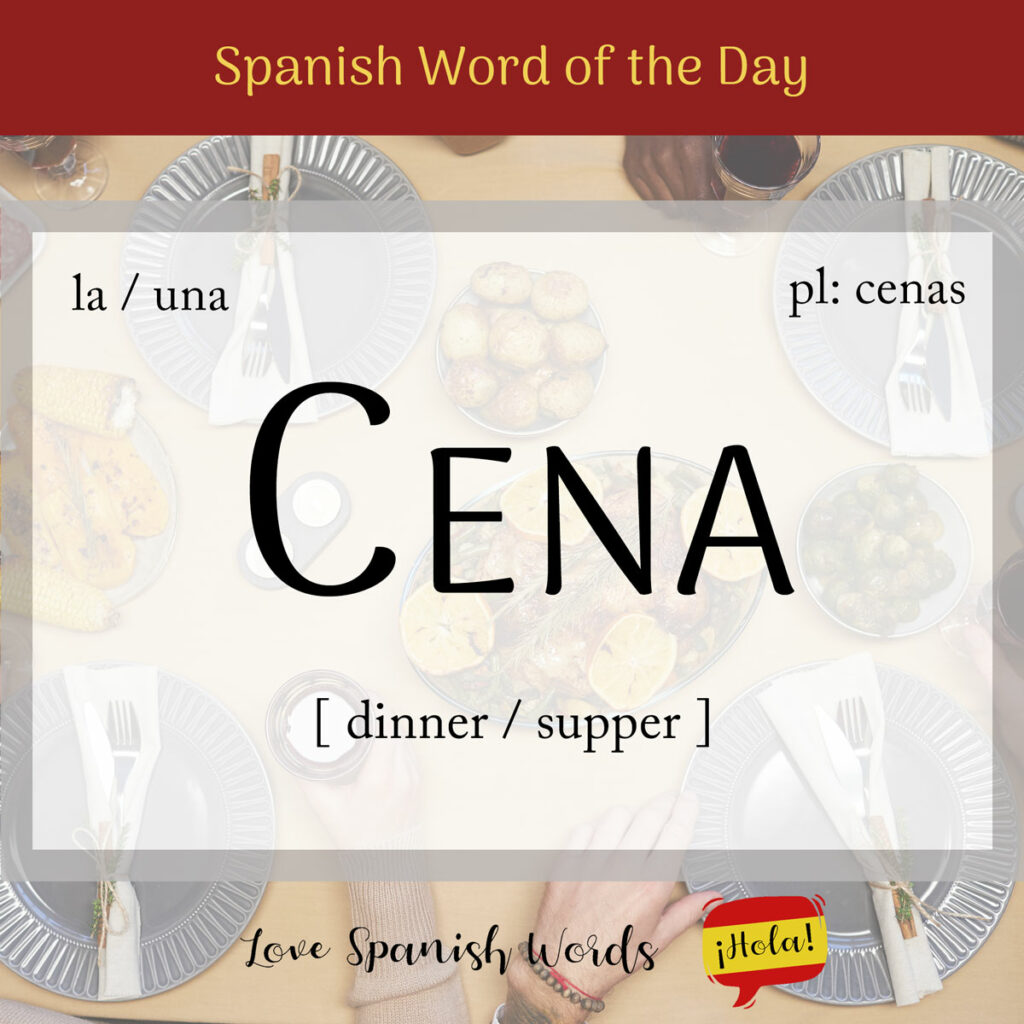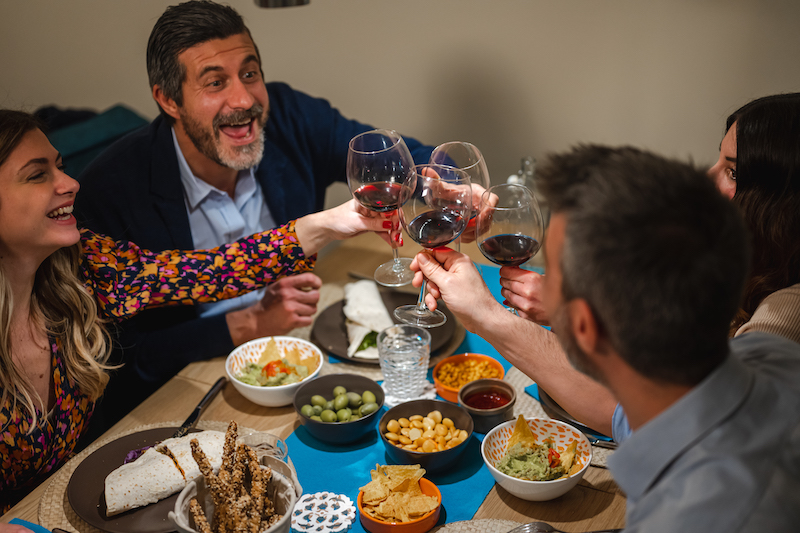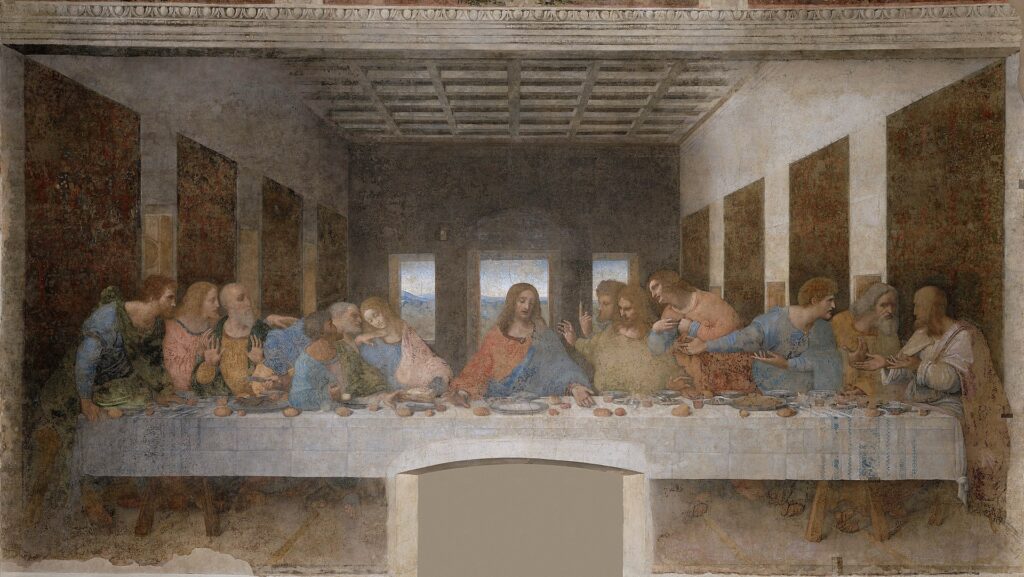In Spain, it’s tradition for people to have five meals a day – el desayuno (breakfast), las tapas (a small meal between breakfast and lunch), la comida (lunch), la merienda (an afternoon snack) and la cena (dinner or supper). Today we’re going to be looking at the final meal on the list, la cena!
Latin American Pronunciation
European Spanish Pronunciation

The term cena directly traces its origins to the Latin word cena, which initially denoted the main meal of the day, commonly enjoyed between midday and early afternoon. Over time, it evolved to be held in the evenings.
Being a feminine noun, it takes the following definite and indefinite articles:
- la cena = the dinner
- las cenas = the dinners
- una cena = a dinner
- unas cenas = some dinners

Important: Dinner is known as la cena in Spain and Mexico, but in many Latin American countries, it is known as la comida. In these countries, lunch is generally referred to as el almuerzo. If you use el almuerzo in Spain or Mexico, however, people will think you are talking about a mid-morning snack. And if you say la comida, Spaniards and Mexicans will assume you mean lunch! In short, make sure to choose the correct term for the variety of Spanish you are learning.
Cenar is the verb meaning to have supper or to dine whereas dinnertime translates as hora de cenar or hora de comer.
¿Qué hay de cena?
What’s for supper?

To say that dinner is ready, you can use the phrase la cena está lista. If you want your kids to come to the table, you can also call out ¡A comer!
Like the English dinner, cena can also refer to a social (and often formal) occasion at which an evening meal is served. Here are a few examples:
- cena de gala = formal dinner / dinner function
- cena de Navidad = Christmas dinner
- cena de despedida = farewell dinner
- cena de negocios = business dinner
- cena de fin de año = year-end dinner
- cena de Acción de Gracias = Thanksgiving dinner
Este año preparé la cena de Navidad.
This year I am preparing Christmas dinner.
One of the most renowned suppers in religious contexts is la Última Cena, or the Last Supper as it is known in English.

Below are some useful verbs you might use in conjunction with cena:
- hacer la cena = to make dinner
- dar una cena = to throw a dinner party
- preparar la cena = to prepare dinner
¿Puedes preparar la cena esta noche? Estoy tan cansado.
Can you make dinner tonight? I am so tired.
A typical cena in Spain provides an opportunity for Spanish families to gather around the table and share stories about their day. Typically enjoyed late in the evening, between 9 pm and 11 pm, dinner tends to be lighter and simpler compared to lunch, which is usually between 2 pm and 4 pm.
Popular dinner options include meats such as chicken and lamb, fish and seafood, omelettes, sandwiches, salads, potatoes, served alongside a vegetable dish and/or rice. Cured meats and cheese are also popular choices, and leftovers from lunch may make an appearance in tapas style. The nature of the dinner can vary with the weather; generally, in hotter weather, the meal is lighter.

In Latin America, cuisine varies significantly from region to region, making it challenging to generalise about dinner preferences. Nevertheless, similar to Spain, cena (or comida) is a family affair and is typically enjoyed later in the day, ranging between 7 pm and 10 pm.

